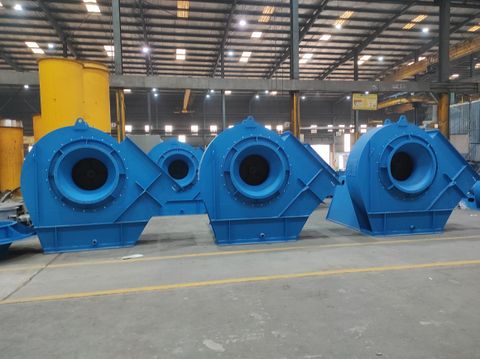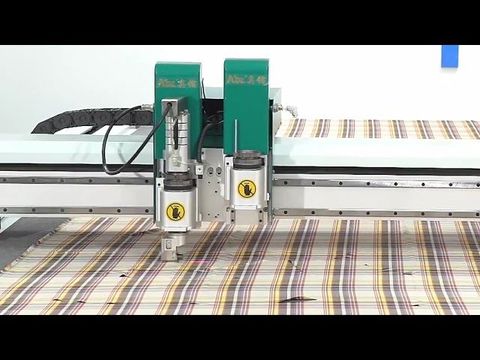A Helpful Overview of Brick Making Machine Types and Features
Brick making machines are essential equipment in the construction and manufacturing sectors, helping produce uniform, durable bricks at scale. As demand for housing, infrastructure, and urban development continues to rise, the need for efficient and reliable brick production technology has also grown. This article provides a clear and simple explanation of the types of brick making machines, their features, industry updates, regulations, and helpful tools, along with answers to common questions.
Brick making machines are mechanical systems designed to mould raw materials into bricks for construction. These machines automate the traditional brick-production process, improving speed, consistency, and quality.

They exist because manual brick-making:
-
Requires significant labour
-
Produces inconsistent product quality
-
Takes more time
-
Involves higher material waste
Modern machines help manufacturers achieve uniform specifications and meet the high demand for construction materials.
Typical Raw Materials Used
-
Clay
-
Fly ash
-
Cement
-
Sand
-
Concrete mixtures
Where Brick Making Machines Are Used
-
Construction companies
-
Real estate developers
-
Manufacturing units
-
Infrastructure projects
-
Rural and urban development initiatives
Automation helps reduce dependence on manual methods and supports high-volume production for growing building needs.
Importance – Why Brick Making Machines Matter Today
Brick making machines play an important role in modern construction due to their ability to deliver consistent quality and higher output.
Key Reasons They Matter
-
Supports rapid urbanisation as more cities need housing and commercial buildings
-
Improves structural safety because machine-made bricks are uniform and reliable
-
Boosts production efficiency by reducing manual labour
-
Reduces waste thanks to precise moulding technology
-
Expands construction capacity in both developed and developing regions
Who Benefits from Brick Making Machines
-
Manufacturers who need high-volume production
-
Builders working under strict timelines
-
Infrastructure contractors
-
Rural entrepreneurs producing bricks locally
-
Governments implementing housing schemes
Problems These Machines Help Solve
-
Shortages of construction materials
-
Inconsistent brick shapes from manual methods
-
Slow production rates
-
High labour costs
-
Environmental concerns through eco-friendly options like fly ash bricks
Recent Updates – Trends and Developments in 2024–2025
The brick manufacturing industry has seen technology upgrades and sustainability-focused improvements in recent years. Here are some notable updates:
Automation and AI Integration (2024)
Manufacturers introduced automated monitoring systems to track machine performance, mould cycles, and raw-material usage. This helps reduce errors and increases production accuracy.
Rising Use of Fly Ash and Eco-Friendly Bricks (2024–2025)
Growing emphasis on reducing carbon emissions encouraged the adoption of machines that produce fly ash, cement, and interlocking bricks. Many industries shifted towards greener alternatives in late 2024 due to local environmental guidelines.
Energy-Efficient Models Introduced (2024)
New machines with low power consumption and improved hydraulic systems were launched to meet demand for cost-effective production.
Integration of Digital Control Panels (2024)
Touchscreen-based panels became popular for machine operation, making it easier to control moulding speed, pressure, and settings.
Compact Models for Small Businesses (2025)
Portable brick making machines gained attention among rural manufacturers, helping small enterprises scale production more affordably.
Growth in Semi-Automatic Machines
Due to their balance of cost and output, semi-automatic models saw increased adoption across India, Southeast Asia, and Africa during 2024–2025.
Laws or Policies Affecting Brick Making Machines
Several regulations influence how brick making machines are manufactured, operated, or used. These policies vary by country but generally aim to protect environmental and safety standards.
Environmental Regulations
-
Guidelines to reduce emissions from clay brick kilns
-
Restrictions on soil excavation in certain regions
-
Encouragement of fly ash brick production under environmental standards
Industrial Safety Regulations
-
Requirements for proper machine installation
-
Periodic inspection of machinery
-
Operator safety training
-
Compliance with mechanical safety standards
Government Programs Supporting Eco-Friendly Bricks
Many governments promote the use of alternative building materials by:
-
Offering subsidies or incentives for fly ash brick production
-
Supporting small-scale brick manufacturing start-ups
-
Encouraging sustainable construction practices
Quality Standards
Brick machines and finished bricks may need to comply with:
-
Local building codes
-
Standardised load-bearing requirements
-
National brick quality benchmarks (varies by country)
These regulations help ensure safe construction materials and promote eco-friendly production.
Tools and Resources – Helpful Apps, Websites, and Services
To assist manufacturers, contractors, and businesses, several tools and platforms provide support for machine selection, production planning, or raw-material management.
Industry and Technical Websites
-
IndiaMART – For comparing machine models
-
TradeIndia – Supplier listings and specifications
-
Alibaba – International machine sourcing
-
Construction World – Construction industry updates
Tools for Production Management
-
Tally – For inventory and production accounting
-
Zoho Inventory – Tracks materials used in manufacturing
-
Google Sheets – Production tracking templates
Construction and Engineering Apps
-
AutoCAD – Planning layouts for brick production units
-
MagicBricks Calculator – Construction cost estimation
-
Estimate App – For small-scale budgeting
Government or Regulatory Resources
-
Local standards bureau websites
-
Environmental guideline portals
-
Industry manuals for brick production safety
Table: Types of Brick Making Machines
| Machine Type | Operation | Suitable For | Key Features |
|---|---|---|---|
| Manual | Hand-operated | Small-scale production | Low cost, simple operation |
| Semi-Automatic | Mixed manual + automated | Medium-scale units | Higher output, reduced labour |
| Fully Automatic | Fully mechanical | Large-scale manufacturing | High productivity, precise controls |
| Hydraulic | Uses hydraulic pressure | Medium to large units | Strong bricks, stable operation |
| Fly Ash Brick Machine | Uses fly ash mix | Eco-friendly production | Sustainable, cost-efficient |
| Interlocking Brick Machine | Produces interlocking blocks | Building projects | No mortar requirement |
| Mobile/Portable Machine | Small and movable | Rural areas, small units | Easy setup, low maintenance |
Table: Key Features to Look for in a Brick Making Machine
| Feature | Why It Matters |
|---|---|
| Production Capacity | Determines how many bricks per hour the machine can deliver |
| Power Consumption | Helps manage operational costs |
| Mould Variety | Supports different brick shapes and sizes |
| Automation Level | Affects labour needs and efficiency |
| Durability of Components | Ensures long-term reliability |
| Hydraulic Pressure | Important for brick strength and density |
| Control System Type | Improves accuracy and ease of operation |
FAQs – Common Questions Answered
1. What types of bricks can brick making machines produce?
Machines can produce clay bricks, fly ash bricks, cement bricks, interlocking blocks, and paving blocks depending on the model and moulds used.
2. How much space is required for installing a brick making machine?
Space requirements vary. Manual machines need a small working area, while automatic units may need larger layouts for raw materials, curing, and storage.
3. Are brick making machines difficult to operate?
Most machines are designed to be user-friendly. Semi-automatic and fully automatic units include digital panels for easier control and monitoring.
4. What maintenance do these machines need?
Regular lubrication, checking hydraulic systems, cleaning moulds, and ensuring proper alignment help maintain long-term performance.
5. Is fly ash brick production environmentally friendly?
Yes. Fly ash is a byproduct of thermal power plants, and using it helps reduce waste and conserve natural clay resources.
Final Thoughts
Brick making machines play a significant role in supporting the global construction industry. With rising demand for durable, consistent, and sustainable building materials, these machines provide valuable solutions for both small and large manufacturers. Ongoing improvements—such as automation, digital controls, and eco-friendly production—continue to shape the future of brick manufacturing. Whether for urban development or rural construction, selecting the right machine type and features can greatly improve efficiency, product quality, and overall output.






